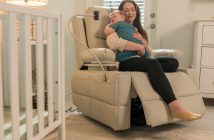MRI which stands for Magnetic Resonance Imaging, is a way to safely and accurately see detailed images of the body’s tissues and organs. Doctors rely on MRIs to discover problems with the brain, spine, joints and internal organs non-invasively. Because ionizing radiation isn’t used in MRI, it is often preferred for sensitive follow-up scans and other sensitive testing.
The Magnetic Field: The Core of the Concern
MRI scanners use very strong magnets, usually measuring 1.5 or 3.0 Tesla which rotate hydrogen protons in the patient’s body. Almost 30,000 to 60,000 times, it is much stronger than Earth’s magnetic field. While the presence of a static magnetic field throughout an mri st george might sound scary, it is safe for your as it doesn’t affect your body.
However, people with pacemakers, aneurysm clips, or certain cochlear implants can’t always undergo MRIs. Some implants are made from ferromagnetic metals, which can move or malfunction in the scanner. But the medical community has responded. More and more implants today are labeled “MRI conditional,” meaning they’re safe under specific parameters. Radiology teams are meticulous in screening for risks, asking detailed questions and even verifying implant types before moving forward. This process is routine, and very effective. If there’s ever any doubt, extra precautions or alternate imaging are used.
Radiofrequency Energy: Heating Risks Explained
MRI also uses radiofrequency (RF) pulses to disturb the hydrogen protons. These pulses generate energy that’s absorbed by the body, measured as Specific Absorption Rate (SAR). High SAR can cause tissue heating. That’s why scans have time and power limits regulated by international standards. In a standard exam, the temperature rise in tissues is usually less than 1°C. You won’t feel it.
But is there a risk of overheating? It’s extremely rare and usually tied to avoidable factors, like improper patient positioning or conductive loops in ECG leads or cables left on the skin. Technologists are highly trained to position patients safely and check for anything that could cause this issue. You’ll be asked to remove certain clothing, and they’ll double-check every wire and lead. The scanner itself monitors heating levels in real-time and adjusts or pauses if needed. The safety net here is layered, deliberate, and reliable.
Acoustic Noise: A Lesser-Known Safety Factor
MRIs are loud. The knocking and banging comes from rapid switching of gradient coils during image acquisition. Sound levels can reach up to 130 decibels. That’s equivalent to a rock concert or a jet engine at takeoff. It’s not dangerous if properly managed, but it’s more than a minor annoyance.
Without ear protection, prolonged exposure to this sound could damage hearing. That’s why everyone undergoing an MRI wears foam earplugs or headphones. This isn’t an afterthought, it’s part of the protocol. Kids, seniors, and everyone in between get the same protection. For extra comfort, some facilities even offer music through noise-canceling headphones.
Claustrophobia and Anxiety: Psychological Safety
The narrow bore and confined environment of traditional MRI machines can cause anxiety or claustrophobia in some patients. This isn’t a safety risk in the physical sense, but it can impact scan quality or even prevent a scan from taking place.
Facilities address this with multiple options: open-bore MRI machines, sedation (if medically approved), or calming techniques like music and ambient lighting. You’re never just left alone in a tube. If you’re anxious, speak up, techs can talk to you during the scan, provide mirrors so you can see outside the machine, or even let you press a panic button. These measures are gentle but effective. The process is built around your comfort, not just your diagnosis.
Contrast Agents: Gadolinium and the Real Risk
For particular examinations, substance called gadolinium is injected into the blood to make the images clearer. Most people do not have health problems from GBCAs, but there are particular risks to look at.
When a patient’s kidneys are healthy, the GBCAs are removed from the body fairly quickly. Severe kidney disease can raise the risk, of a condition called nephrogenic systemize fibrosis (NSF). Although this is extremely rare. Radiologists now avoid certain GBCAs in high-risk patients and screen kidney function beforehand. Newer macrocyclic agents have significantly reduced this risk.
What about gadolinium retention in the brain and bones? Trace amounts can remain, even in patients with healthy kidneys. So far, studies have found no consistent link between retention and health issues. Protocols now favor the safest agents available, and doses are kept as low as possible. Every dose is justified. You’re not given contrast unless it improves diagnosis in a meaningful way. Screening, selection, and follow-up are handled with care, not assumption.
Long-Term Exposure: What We Actually Know
MRI has been in use for over 40 years, with millions of scans conducted annually. There is no evidence linking routine MRI exposure to cancer, tissue damage, or long-term health effects in patients or technologists. Unlike ionizing radiation, which is cumulative and potentially mutagenic, MRI uses non-ionizing fields that do not alter DNA.
Technologists working around MRIs are also safe, provided they respect the controlled environment. They stay outside the magnet’s bore, where field strength drops off sharply. No long-term health effects have been associated with chronic occupational exposure.
Pediatric and Fetal Safety
MRIs are often used in children and pregnant patients because they avoid radiation. Multiple studies have shown that fetal MRI poses no increased risk to the unborn child when performed without contrast. The American College of Radiology considers it safe at any stage of pregnancy, though it’s usually reserved for the second or third trimester unless absolutely necessary.
For children, the concern is mostly about sedation, not the MRI itself. Some kids need to be still for long periods, which may require light sedation. Pediatric teams specialize in this section and provide child-friendly environments and specialized anesthesiology, everything is tailored to reduce stress and keep things safe. Parents are often allowed to stay close by for comfort and caution.
MRI technology is remarkably safe. It’s radiation-free, non-invasive, and tightly regulated. Most of the risks are avoidable with proper screening and trained staff. The technology itself doesn’t harm the body, doesn’t alter DNA, and doesn’t increase cancer risk. As long as safety protocols are respected, MRI remains a powerful diagnostic ally with minimal downside. Don’t fear the magnet. Respect it, prepare for it, but understand it’s one of the safest ways to look inside the human body without cutting it open.





Transform shared spaces into your own focused work zone using the acoustic solution offered by https://privacypod.ai/. These mobile pods are designed for portability, giving you the ability to establish a quiet, distraction-free office no matter your environment. Whether you’re working from home, co-working, or even in retail, the sleek structure keeps noise out and attention in. It’s about comfort, functionality, and making space your own without needing construction or long-term commitments. Just set it up, plug in, and get to work.
Интернет-магазин Рыбачок предлагает широкий ассортимент рыболовных товаров, включая мультипликаторные катушки, предназначенные для комфортного и успешного ловли рыбы. В нашем каталоге представлены модели различного уровня сложности и стоимости, что позволяет каждому рыболову выбрать оборудование под свой стиль и условия рыбалки. Мы гарантируем высокое качество продукции, оригинальность и надежность всех товаров. Благодаря удобной навигации и подробным описаниям, покупатели легко ориентируются и быстро находят необходимое снаряжение, что делает процесс покупки максимально приятным и эффективным. Мы ценим каждого клиента и предлагаем профессиональную консультацию, чтобы помочь выбрать идеальные катушки и аксессуары для любых условий ловли.Рыбачок осуществляет доставку по всей Украине, обеспечивая быструю и надежную доставку товара прямо к вашей двери. Мы работаем с проверенными логистическими компаниями, что позволяет нам сохранять высокий уровень сервиса и гарантию сохранности покупки. Наш магазин постоянно обновляет ассортимент, чтобы обеспечить клиентов самыми современными и технологичными решениями для рыбалки. Оформить заказ легко через сайт, а при возникновении вопросов — всегда можно обратиться к нашим специалистам за консультацией. Мы стремимся стать надежным спутником каждого рыболова, помогая ему достигать новых успехов в любимом хобби благодаря качественной экипировке и своевременной доставке.Подробнее: Доставка по всей Украине. Ничего кроме текста в ответ не пиши. Текст близкий по тематике урл: https://rybach0k.com.ua/g126096900-multiplikatornye-katushki
MRI technology is incredibly safe when used correctly. It doesn’t involve ionizing radiation like X-rays or CT scans, skilled nursing facility care Long Beach which reduces long-term risk. The strong magnetic fields require strict safety protocols, especially around metal. For most patients, MRI offers a noninvasive, reliable imaging method with minimal side effects or complications.
Breathtaking visuals can truly set the tone for an unforgettable event. When we decided to elevate our production setup, we explored various LED screen rental options in Miami and came across a solution featuring P1.9mm LED panels that turned out to be exactly what we needed. The image clarity was exceptional — crisp, vibrant, and perfect for delivering high-resolution content, even in challenging lighting environments https://rentforevent.com/miami/led-screen-rental .The video wall installation process was seamless and professionally handled. From the initial consultation to the final setup, the team was well-organized, punctual, and clearly experienced with working on both indoor and outdoor events. Their attention to detail really impressed us, especially how they adapted the configuration of the LED wall to suit the unique layout of our venue.
Modern players are drawn to online platforms that combine ease with excitement, and ufalion168 stands out as a go-to destination. With its vivid game selection, intuitive layout, and streamlined user experience, it captures the thrill of a traditional casino without stepping outside. Whether you’re spinning reels or challenging cards, the platform keeps things engaging. The real attraction lies in its consistent performance and simple mechanics ideal for those who want less hassle and more action in their gaming routine.
Интернет-магазин Рыбачок предлагает широкий ассортимент рыболовных товаров, включая мультипликаторные катушки, предназначенные для комфортного и успешного ловли рыбы. В нашем каталоге представлены модели различного уровня сложности и стоимости, что позволяет каждому рыболову выбрать оборудование под свой стиль и условия рыбалки. Мы гарантируем высокое качество продукции, оригинальность и надежность всех товаров. Благодаря удобной навигации и подробным описаниям, покупатели легко ориентируются и быстро находят необходимое снаряжение, что делает процесс покупки максимально приятным и эффективным. Мы ценим каждого клиента и предлагаем профессиональную консультацию, чтобы помочь выбрать идеальные катушки и аксессуары для любых условий ловли.Рыбачок осуществляет доставку по всей Украине, обеспечивая быструю и надежную доставку товара прямо к вашей двери. Мы работаем с проверенными логистическими компаниями, что позволяет нам сохранять высокий уровень сервиса и гарантию сохранности покупки. Наш магазин постоянно обновляет ассортимент, чтобы обеспечить клиентов самыми современными и технологичными решениями для рыбалки. Оформить заказ легко через сайт, а при возникновении вопросов — всегда можно обратиться к нашим специалистам за консультацией. Мы стремимся стать надежным спутником каждого рыболова, помогая ему достигать новых успехов в любимом хобби благодаря качественной экипировке и своевременной доставке https://rybach0k.com.ua/g126096900-multiplikatornye-katushki